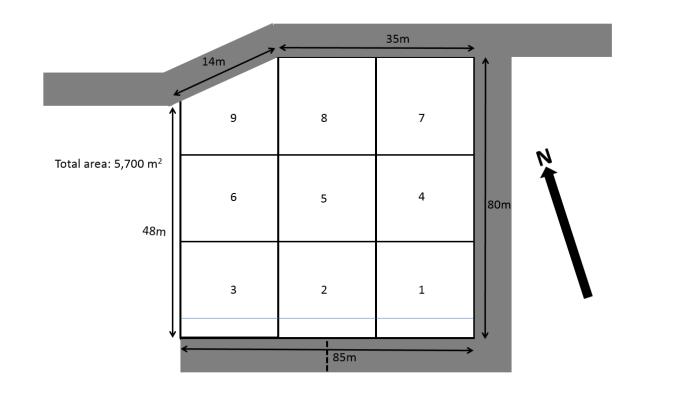
Initial situation
The enclosure is relatively small
Continuous recording and observation were possible.
Here the situation was a little complicated.
The wolves were scared of the caretakers (everytime one of them appeard on the bridge they started to be vigilent and actively tried to distance themselves from them) and during our stay with the coach we also discoverd that the wolves were afraid of the food throwing gesture.
TRAINING GOALS
Apease the wolves and start creating a routine for them in order to make them habituated to the caretakers.
Training method
Step one:
Caretakers comes everyday at the same time,
wait for the wolves to look in his/her direction
Drop the food in Zone 8Wait for the wolves to look again and leaves
GOAL:
Habituate the wolves to a really regular schedule so that they know when the caretakers are coming. This routine will reduce the stress they feel when the feeding happens.
Step 2:
Add a ringing bell to step 1 everytime the food is dropped in the enclosure the bell rings
GOAL:
Creates a signal that in time will link the food and the sound dissociating everything else the caretakers are doing from that particular moment. That signal could be used as a reinforcer later.
Observations and analyses
OBSERVATIONS
Continuous observations were conducted for one hour every day I was in the zoo during both of my visits.
(only one hour because that is all the sunlight I had in december when I arrived)
They were made on a tablet with the Boris recording software. The behaviours were braodly divided in three main categories
Wanted/Positive (included: play, relaxed, walking together...etc.)
Unwanted (Included: avoidance, vigilance, fight...etc.)
Others (Included: Vantage point, non observable...etc.)
ANALYSES
A Wilcoxon test has been donne on each behaviour categories comparing the first and second visit result for each individual to see if a difference could be seen.
Responsible for this page:
Director of undergraduate studies Biology
Last updated:
06/18/20
